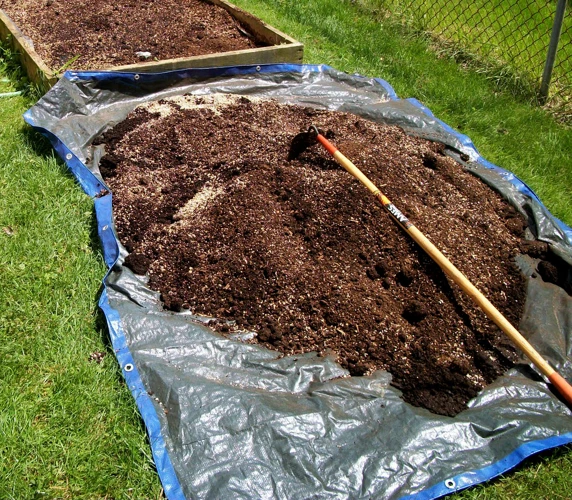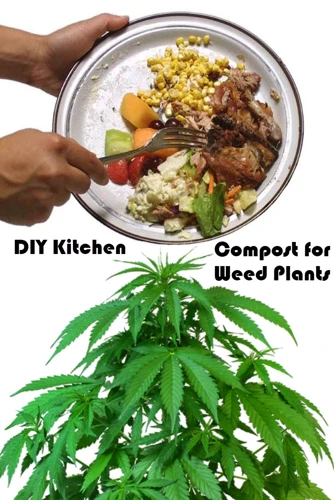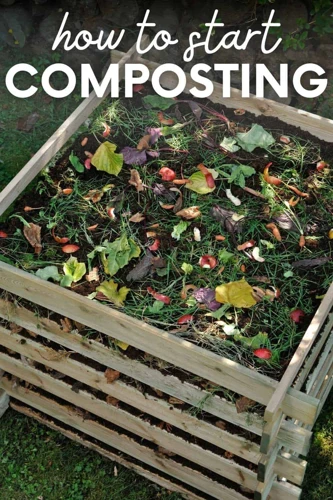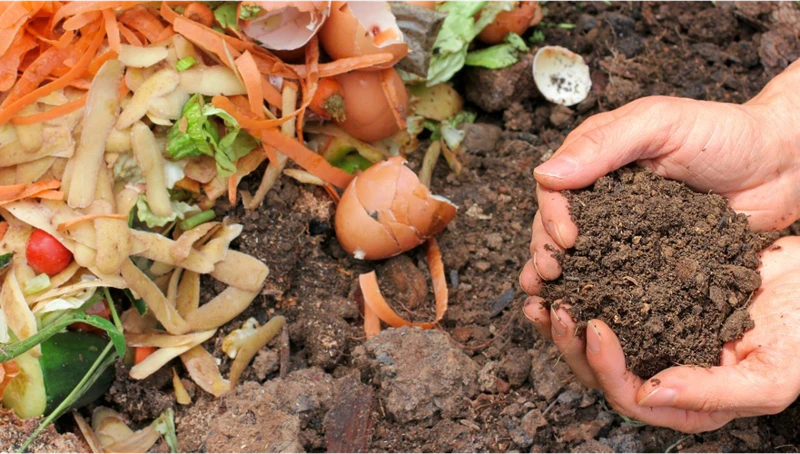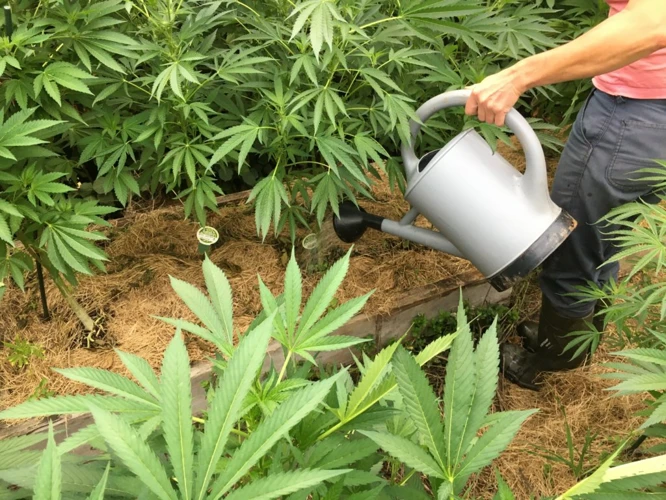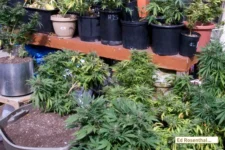
Beginner’s Guide to Composting for Your Cannabis Garden
Introduction
Contents
When it comes to cultivating cannabis plants, ensuring the proper nutrition for healthy growth and high yields is essential. Composting is a natural, chemical-free way to fertilize your plants and improve soil quality. Whether you’re a beginner or an experienced gardener, starting a compost may seem overwhelming. However, with the right guidance and some basic knowledge, you can successfully start composting for your cannabis garden. In this article, we’ll cover the benefits of composting, different types of composting, how to start your own compost, tips for indoor and outdoor gardening, and mistakes to avoid to help you achieve your best yield yet.
Why Composting is Important for Cannabis Plants
Composting is one of the most important steps when it comes to growing cannabis plants. By using compost, you are creating a natural and sustainable way to provide your plants with the necessary nutrients they need to grow and thrive. Composting allows for the organic matter to breakdown naturally and create a nutrient-rich soil for your cannabis plants to grow in.
Without composting, your cannabis plants may suffer from nutrient deficiencies, pests, and diseases. Composting is vital to the health and success of your cannabis garden. By adding compost to your soil, you are not only improving the overall health of your plants, but you are also making a positive impact on the environment by reducing waste and utilizing organic materials.
Using chemical fertilizers may be harmful to your plants and the surrounding ecosystem, which is why composting provides a safe and natural alternative. Composting not only provides nutrients to your cannabis plants, but it also helps to improve soil structure and water retention. This means that the soil is better able to retain moisture and nutrients, which in turn helps your plants to grow and develop a healthy root system.
In addition to providing your plants with the necessary nutrients and improving soil structure, composting also reduces waste. By composting your organic material, you are reducing the amount of waste that ends up in landfills, which helps to reduce greenhouse gas emissions and contributes to a healthier planet.
Composting is important for cannabis plants because it provides a natural, sustainable, and effective way to provide nutrients to your plants, while also improving soil quality, reducing waste, and avoiding harmful chemicals.
Benefits of Composting for Your Cannabis Garden
Composting is a sustainable and cost-effective way to improve the growth and health of your cannabis plants. By breaking down organic materials into nutrient-rich soil, you’ll be able to provide your plants with the essential elements they need. This results in several benefits that can help you achieve a successful harvest. Let’s explore a few of these advantages using specific examples to demonstrate the importance of composting for your cannabis garden.
Improved Soil Quality
One of the main benefits of composting for your cannabis garden is the improved soil quality. Compost is rich in nutrients such as nitrogen, phosphorus, and potassium, which are essential for plant growth. When you add compost to your soil, it enhances its fertility and structure, providing your cannabis plants with a healthy environment to grow in.
Compost also helps to improve the soil’s water-holding capacity, meaning that it can retain more moisture, reducing the need for frequent watering. This is particularly important in areas where water is scarce or during dry periods. Additionally, the improved soil quality resulting from composting can help to prevent soil erosion, which can be a problem in areas with heavy rainfall.
The soil structure is essential to the growth of your cannabis plants. Healthy soil will have a good balance of air, water, and organic matter. The addition of compost to your soil can improve the soil structure, making it more crumbly and easier for roots to penetrate. This helps to promote healthy root development and ultimately leads to stronger, healthier plants.
To summarize, composting improves the soil quality in your cannabis garden by:
- Providing essential nutrients for plant growth
- Enhancing soil fertility and structure
- Reducing the need for frequent watering
- Preventing soil erosion
- Improving the balance of air, water, and organic matter in soil
- Promoting healthy root development
The improved soil quality resulting from composting creates an optimal environment for your cannabis plants to grow, ultimately leading to higher yields and better quality crops.
Reduced Waste
Reducing waste is a major benefit of composting for your cannabis garden. Composting allows you to turn your food scraps, yard waste, and other organic materials into nutrient-rich soil that your plants will love. When you compost, you reduce the amount of waste that ends up in landfills, where it can create harmful greenhouse gas emissions as it decomposes.
Instead of contributing to the waste problem, you can use your organic waste to create something valuable for your garden. By composting, you’re doing your part to support sustainability and reduce your carbon footprint.
Plus, composting helps to reduce the amount of money you spend on fertilizers and soil amendments for your cannabis plants. When you create your own compost, you are essentially recycling your waste and turning it into something useful and cost-effective.
| Benefits of reducing waste through composting |
|---|
| Environmental Benefits |
| Economic Benefits |
| Social Benefits |
| Reduced greenhouse gas emissions |
| Lower fertilizer purchase costs |
| Increased awareness and understanding of sustainability |
| Less waste in landfills |
| Reduced need for harmful chemical fertilizers |
| Opportunities for community involvement and education |
Reducing waste through composting is a win-win situation for both the environment and your cannabis garden. With a little effort and patience, you can turn your organic waste into a valuable resource that will support the health and vitality of your plants.
Chemical-Free Fertilizer
Composting is not only a way to reduce waste but also results in the creation of a natural and organic fertilizer. This is a chemical-free fertilizer which is safe for cannabis plants and the environment.
Chemical fertilizers can have negative impacts, such as harming beneficial microbes in the soil, leaching into water sources, and causing nutrient imbalances. On the other hand, compost helps to restore soil health by providing a diverse range of nutrients, such as:
| Nutrient | Description | Benefits for Cannabis Plants |
|---|---|---|
| Nitrogen (N) | Important for plant growth and leaf development. | Needed for vegetative growth and protein synthesis. |
| Phosphorus (P) | Essential for root development and flower production. | Helps with energy storage and transfer, improves overall plant health and flowering. |
| Potassium (K) | Important for overall plant health and stress tolerance. | Contributes to strong stems and resistance to pests and diseases. |
| Calcium (Ca) | Needed for cell wall development and plant structure. | Contributes to the strength and rigidity of the plant cell walls, and helps regulate other nutrients. |
| Magnesium (Mg) | Important for chlorophyll production and enzyme activity. | Involved in photosynthesis and overall plant health. |
| Sulfur (S) | Essential for protein synthesis and plant growth. | Contributes to healthy growth and stress tolerance. |
By using compost as a fertilizer, you can provide your cannabis plants with all of these essential nutrients and more. Additionally, compost helps to improve soil structure and water-holding capacity, which can result in improved plant growth and yield. Using a chemical-free fertilizer like compost is not only better for your plants, but it is also a safer and more sustainable option for the environment.
Types of Composting
When it comes to composting, there are several different methods that can be used. Each method has its own unique benefits and considerations, depending on factors such as time, space, and resources. Some of the most commonly used composting methods include hot composting, cold composting, and vermicomposting. Understanding the differences between these methods can help you determine which one is the best fit for your cannabis garden composting needs.
Hot Composting
Hot composting is a composting method that requires higher temperatures, typically between 135-160°F. This process involves actively managing the compost pile by regularly turning and aerating it to increase the internal temperature.
Advantages of Hot Composting
| Advantages |
| — |
| Breaks down materials faster |
| Destroys weed seeds and pathogens |
| Produces nutrient-rich compost |
Hot composting has many advantages over other composting methods. Firstly, it breaks down materials faster due to the higher temperature, with compost usually being ready within 3-4 months. Secondly, the high temperature kills weed seeds and pathogens that could potentially harm your plants. Finally, the nutrient-rich compost produced from hot composting is beneficial for the growth of cannabis plants.
Materials to Use for Hot Composting
| Materials to Use |
| — |
| Green materials (nitrogen-rich) such as food scraps, grass clippings, and manure |
| Brown materials (carbon-rich) such as leaves, hay, and straw |
| A compost bin or pile |
When hot composting, it is important to have the right materials to maintain the internal temperature of the compost pile. Green materials such as food scraps, grass clippings, and manure provide nitrogen while brown materials such as leaves, hay, and straw provide carbon. Incorporating both green and brown materials in a 3:1 ratio will create the ideal balance for hot composting. Additionally, a compost bin or pile is necessary to contain and actively manage the compost pile.
Steps for Starting a Hot Compost Pile
| Steps |
| — |
| Layer brown and green materials |
| Add water to moisten the pile |
| Turn the pile regularly |
| Monitor internal temperature |
To start a hot compost pile, begin by layering brown and green materials in a 3:1 ratio. Add water to moisten the pile to the consistency of a damp sponge. Turn the pile regularly, every few days, with a pitchfork to aerate and distribute heat evenly. Monitoring the internal temperature with a thermometer is important to determine if the compost pile needs more air or water. The internal temperature should remain between 135-160°F for optimal hot composting.
Cold Composting
Cold composting is another method of composting that is much slower than hot composting. However, it is much easier and requires little effort. This method of composting is ideal for those who don’t generate a lot of food waste or don’t have a yard to compost in.
Process: Instead of actively managing the compost, the cold composting process involves allowing the materials to break down over time with little intervention. Simply place your compost materials in a compost bin or pile and leave them to decompose naturally.
Materials: Cold composting requires a mix of greens and browns, just like hot composting. However, you don’t need to worry about creating the perfect balance of materials as the slow decomposition process will balance itself out.
Timeframe: Cold composting can take anywhere from 6 months to 2 years for materials to fully break down. While this may seem like a long time, it is low maintenance, making it a great option for those who don’t have the time or resources for hot composting.
Pros: Cold composting requires little effort and is perfect for those who generate a small amount of compostable materials or don’t have the space to actively manage a compost pile. It is also low cost and involves using natural processes to break down the materials.
Cons: The downside to cold composting is the long timeframe for materials to break down compared to hot composting. It also may not generate as much heat as hot composting, meaning it may not kill any weed seeds or disease pathogens that may be present.
Cold composting is a great option for those who don’t have the time or resources for hot composting. While it may take longer, the end result is still a nutrient-rich compost that is beneficial for your cannabis garden.
Vermicomposting
Vermicomposting is an excellent way to compost organic waste using worms, specifically red wigglers. This method is perfect for those who want to compost indoors or don’t have access to an outdoor space suitable for a compost pile. Vermicomposting offers numerous benefits, including producing high-quality compost and reducing waste.
Benefits of Vermicomposting
| 1. | Creates nutrient-rich compost |
| 2. | Reduces waste going to landfills |
| 3. | No offensive odor |
| 4. | Requires less space than traditional composting |
| 5. | Produces compost faster |
Starting Your Vermicompost
To start vermicomposting, you will need a bin, red wiggler worms, and bedding material. Bedding material can be made from shredded newspaper, cardboard, or coconut coir. Worm bins can be purchased or made at home from a plastic container with air holes on the sides.
Feeding Your Worms
When feeding your worms, they need a balanced diet of carbon-rich materials, such as shredded newspaper or cardboard, and nitrogen-rich materials, such as fruit and vegetable scraps. Avoid feeding them dairy, meat, or oily foods, as these will attract pests and cause odors. A good rule of thumb is to feed your worms a quarter to a half-pound of food waste per pound of worms per day.
Harvesting Your Compost
When your vermicompost is ready, the bedding material will have been turned into nutrient-rich compost. To harvest it, simply stop feeding your worms for a few weeks, and they will migrate to the bottom of the bin where their castings are concentrated. Then, you can remove the compost and start the process all over again.
Vermicomposting is a fantastic way to compost indoors and produce high-quality compost for your cannabis plants. By following these steps, you can start your own vermicompost and contribute to a healthier environment.
Starting Your Compost
Beginning the process of composting for your cannabis garden can seem overwhelming with so many variables to consider. However, by starting small and carefully selecting the right materials, you can create a thriving compost pile that will benefit your plants. The key is to understand the factors that affect composting and how to layer your compost to optimize the process. In this section, we will guide you through the process of starting your compost and provide tips for success. So, grab your gloves and let’s get started!
Getting the Right Materials
In order to start composting for your cannabis garden, it’s important to gather the right materials to create a healthy and nutrient-rich compost.
Table 1 below outlines some of the common materials that can be used for composting:
| Green Materials: | Brown Materials: | Other Materials: |
|---|---|---|
| Grass clippings | Dry leaves | Eggshells |
| Vegetable scraps | Straw | Coffee grounds |
| Fruit scraps | Shredded newspaper | Tea bags |
| Weeds (without seeds) | Sawdust | Wood ash |
| Green plant trimmings | Corn cobs |
It’s important to have a balance of “green” materials, which are high in nitrogen, and “brown” materials, which are high in carbon. This balance will ensure that the compost breaks down properly and provides the necessary nutrients for your cannabis plants.
Additionally, avoid adding meat, dairy, or fatty foods to your compost as they can attract pests and slow down the composting process.
Table 2 below outlines common materials to avoid adding to your compost:
| Meat | Dairy | Fatty Foods | Charcoal Ash | Chemically-treated items |
By gathering the right materials and avoiding adding certain items, you can create a healthy and effective compost for your cannabis garden.
Layering Your Compost
The layering process is a crucial step in determining the success of your compost. It involves adding organic materials in specific layers to promote proper decomposition. Here are the steps to layering your compost:
- Start with a layer of dry materials: This layer should be made up of “brown” materials like dead leaves, straw, or twigs. These materials provide the carbon necessary for composting.
- Add a layer of wet materials: After the dry layer, add a “green” layer made of moist materials like grass clippings, vegetable and fruit scraps, or coffee grounds. These materials give the compost the nitrogen it needs to break down properly.
- Continue alternating layers: Repeat the process of adding a layer of dry materials followed by a layer of wet materials until your compost pile is around 3 feet tall.
- Avoid using certain materials: Some materials, like meat, dairy products, and pet waste, should not be added to your compost pile as they can attract pests and create an unpleasant odor.
- Add water: After you’ve added a few layers, spray the pile with water to ensure that it stays moist. A dry compost pile will not properly break down.
- Mix the compost occasionally: Every few weeks, use a pitchfork or garden tool to aerate and mix the pile. This helps to distribute air and moisture throughout the compost, speeding up the decomposition process.
Remember that the key to successful composting is balance. Too much of one type of material can throw off the carbon-to-nitrogen ratio and slow down decomposition. By following these layering steps, you can create a healthy and nutrient-rich compost for your cannabis plants.
Factors Affecting Composting
Composting is a natural biological process that involves the breakdown of organic matter into nutrient-rich soil. There are several factors that can affect the success of your composting efforts. Here is a table outlining the most important ones:
| Factors | Description |
| Carbon-to-Nitrogen (C:N) Ratio | A proper balance between carbon-rich materials (like leaves, straw, and wood chips) and nitrogen-rich materials (like food scraps and manure) is necessary for efficient decomposition. A C:N ratio of 25-30:1 is ideal. |
| Moisture | The microorganisms that break down the compost need moisture to survive, but too much water can cause the pile to become saturated and slow down the process. Aim for a moisture level of 40-60%. |
| Aeration | Adequate oxygen is necessary for the microorganisms to break down the organic matter. Turning or mixing the pile regularly can ensure that oxygen is evenly distributed. |
| Temperature | A hot compost pile with temperatures between 130-160°F can speed up the process and kill off weed seeds and pathogens, but it can also dry out the pile quickly. A cold compost pile will take longer to decompose but requires less effort to maintain. |
| Size | A larger pile can insulate heat and retain moisture better than a small pile. The optimal size range is 3-5 feet high by 3-5 feet wide. |
| Materials | Avoid using meats, dairy products, oils, fats, and pet waste in your compost pile as they can attract pests and cause unpleasant odors. Stick to plant-based materials like fruits, vegetables, grass clippings, and leaves. |
By keeping these factors in mind, you can create the perfect environment for your organic materials to transform into nutrient-rich soil that is perfect for your cannabis garden.
Composting Tips for Indoor or Outdoor Cannabis Gardens
As you embark on your composting journey, it’s important to keep in mind the unique considerations for your indoor or outdoor cannabis garden. Whether you’re composting in a small apartment or in your backyard, there are tips and tricks that can help you make the most out of your compost. From managing odors to controlling moisture levels, these essential tips will help streamline your composting process and ensure you have high-quality fertilizer to use for your cannabis plants.
Indoor Composting Tips
When it comes to indoor composting for your cannabis garden, there are a few tips that can help ensure success.
1. Choose the Right Container: When composting indoors, it’s important to choose a container that will fit comfortably in your space. Consider using a plastic or metal bin with a tight-fitting lid, or even a ceramic crock with a lid.
2. Start Small: It’s important to start small when composting indoors, especially if you’re new to the process. Begin with a small bin and gradually work your way up as you become more comfortable and experienced.
3. Use the Right Materials: The key to successful indoor composting is to use the right materials. This includes a balance of green and brown materials, as well as shredded newspaper, dried leaves, and kitchen scraps like fruit and vegetable peels. Avoid adding any dairy or meat products, as these can attract pests and produce unpleasant odors.
4. Monitor the Moisture: Indoor composting requires a bit more attention to moisture levels. Aim for a moisture level similar to a wrung-out sponge. If the compost is too dry, it will take longer to break down, while if it’s too wet, it can produce unpleasant odors and attract pests.
5. Turn the Compost Regularly: To ensure the compost breaks down evenly and thoroughly, it’s important to turn it regularly. This means mixing the materials with a fork or shovel every few weeks.
6. Consider Using a Compost Accelerator: Indoor composting can take longer than outdoor composting, but using a compost accelerator can help speed up the process. Look for a natural, organic accelerator at your local garden center or online.
7. Know When Your Compost is Ready: Once your compost has turned into a dark, crumbly material that smells earthy, it’s ready to use in your cannabis garden. Be sure to sift out any large pieces that haven’t fully decomposed before adding it to your soil.
By following these indoor composting tips, you can create a healthy and sustainable soil amendment for your cannabis garden while reducing your carbon footprint and promoting a more eco-friendly lifestyle.
Outdoor Composting Tips
Outdoor Composting Tips
When it comes to outdoor composting for your cannabis garden, there are some important things to keep in mind to ensure that your compost is successful. Here are some tips to help you get started:
| Tip 1: | Avoid placing your compost pile directly on the ground as this can attract rodents and other pests. Instead, place your compost on top of a layer of wire mesh or cement blocks to deter pests. |
| Tip 2: | Keep your compost pile moist, but not too wet. If the pile becomes too wet, it can slow down the composting process and attract unwanted insects. Consider covering your pile with a tarp during periods of heavy rain. |
| Tip 3: | Turn your compost pile regularly to ensure that it is well-aerated. This will help speed up the composting process and prevent the pile from becoming too compacted. Use a garden fork or compost turner to mix up the materials in your pile. |
| Tip 4: | Avoid adding meat, dairy, or fatty materials to your outdoor compost pile as these can attract unwanted pests and slow down the composting process. |
| Tip 5: | Consider adding a layer of garden soil or finished compost to your outdoor pile. This can help introduce beneficial microorganisms to your compost and speed up the composting process. |
| Tip 6: | Monitor the temperature of your compost pile. Outdoor composting can be affected by temperature changes, so it’s important to make sure that your pile isn’t getting too hot or too cold. Use a compost thermometer to check the temperature of your pile regularly. |
By following these tips, you can create a successful outdoor composting system for your cannabis garden. Remember, composting is a natural process and takes time, but the end result is well worth the effort.
Using Your Compost for Cannabis Plants
Now that you have successfully started your compost, it’s time to put it to good use for your cannabis garden. Compost is a great way to provide your plants with the necessary nutrients and minerals they need to thrive. It’s easy to use and has many benefits compared to traditional fertilizers. In this section, we’ll explore the different methods of using your compost and how to ensure your plants get the most out of it. So, let’s get started and learn how to use your homemade compost for your cannabis plants.
Preparing Your Soil
To prepare your soil for the use of compost, you have to follow some simple steps to get the right mix. Here are the steps to prepare your soil using compost:
Step 1: Choose The Right Area
Choose an area where you want to plant cannabis in the soil. It should be a sunny area with adequate drainage. Make sure the area does not get too much rain, as the over-watered soil can be harmful to the roots of the plant.
Step 2: Clear The Soil
Clear the soil by removing any unwanted material such as rocks, weeds, and debris. This will make the soil smoother and easier to work with.
Step 3: Add Compost
Once you have removed the unwanted material, add compost to the soil. The compost should be already decomposed, dark, and crumbly. You should use a 50/50 mix of compost and soil. For every square foot of soil, one inch layer of compost is suggested.
Step 4: Mix The Compost
Mix the compost and soil thoroughly with a shovel or tiller. Make sure the compost is well blended with the soil. You can also use your hands to mix it manually. Mixing the compost helps to evenly distribute it through the soil.
Step 5: Test The Soil
Make sure to test the soil pH level before planting cannabis. The pH level should be between 6.0 and 7.0. If it’s too acidic, you can add lime to the soil. If it’s too alkaline, you can add sulfur to the soil. Make sure to follow the instructions on the packet of lime or sulfur.
By preparing your soil using compost, you can provide all the essential nutrients to your cannabis plant. This natural approach provides a healthy growing environment with no harmful chemicals.
Using Compost Tea
Compost tea is a highly beneficial and nutritious liquid made from compost that can be used to feed your cannabis plants. It’s very easy to make and can provide your plants with a surplus of valuable nutrients. Here are some tips on how to use compost tea for your cannabis garden:
| Step | Description |
|---|---|
| 1 | Brew the Tea: To make compost tea, first, you need to gather a handful of compost and place it in a large bucket or container. Add water to the container and let it sit for a few days. As the water soaks up the nutrients from the compost, the liquid will become nutrient-rich compost tea. |
| 2 | Strain the Tea: After steeping the compost, strain it to remove any remaining solids. You want to end up with a liquid that can be easily poured onto your plants. |
| 3 | Water Your Plants: Finally, it’s time to water your plants with the compost tea! Make sure to water your plants thoroughly with the tea, making sure to cover the entire root system. Compost tea is a fantastic source of nutrients for your plants and can help them grow healthy and strong. |
When using compost tea, it’s important to remember that it should not be used as a replacement for regular watering. Rather, it should be used in addition to regular watering as a dietary supplement for your plants. Additionally, if you’re using compost tea on indoor plants, make sure to use it sparingly in order to avoid any potential odor issues. Compost tea is an easy and effective way to provide your cannabis plants with the nutrients they need to thrive.
Mistakes to Avoid When Composting for Your Cannabis Garden
Making your own compost for your cannabis garden can be a rewarding and satisfying activity, but it’s important to avoid some common mistakes that can detract from the benefits. Here are some tips on what to avoid when composting for your cannabis garden:
Avoid adding weed seeds or diseased plants to your compost pile. Adding weed seeds can lead to unwanted growth in your garden, while diseased plants can spread the disease to healthy ones.
Avoid adding meat, dairy, or oily foods to your compost pile. These foods can attract pests such as rats, raccoons, and flies which can be detrimental to your composting efforts. Additionally, these foods can take longer to break down and can cause unpleasant smells.
Avoid adding too much of any one material to your compost pile. For example, adding too much grass or leaves can lead to a soggy, smelly mess. It’s important to maintain a balance of green (nitrogen-rich) and brown (carbon-rich) materials for optimal composting.
Avoid neglecting your compost pile. Composting requires regular maintenance, so it’s important to turn the pile regularly and monitor the moisture level. Neglecting your compost pile can lead to slow decomposition and unpleasant odors.
Avoid composting chemically treated materials. Chemicals such as pesticides and herbicides can disrupt the natural balance of your compost pile and harm your cannabis plants.
By avoiding these common mistakes, you can ensure that your composting efforts are effective and beneficial for your cannabis garden. Remember to check on your compost pile regularly, maintain a balance of materials, and avoid adding any unwanted or harmful substances. With these tips in mind, you can enjoy the many benefits of composting for your cannabis plants.
Conclusion
After following the steps to start your own composting for your cannabis garden, you can now enjoy the numerous benefits of composting. Your plants will thrive in the improved soil quality and you can take pride in knowing that you are reducing waste and using a chemical-free fertilizer.
Whether you choose hot composting, cold composting, or vermicomposting, it is important to remember to get the right materials and layer them properly. Factors such as moisture, temperature, and aeration can affect the composting process, so keeping these in mind can lead to a more successful and efficient composting experience.
For those with indoor gardens, there are specific tips to ensure that your composting doesn’t produce unpleasant odors. Outdoor gardeners, on the other hand, may need to protect their compost from animals and the environment.
Using your compost to prepare your soil or to make compost tea is a great way to boost the health of your cannabis plants. However, it is crucial to avoid common mistakes such as adding inorganic materials, using meat or dairy products, or not properly maintaining the compost.
In conclusion, composting is a valuable practice for any cannabis gardener looking to enhance their plants’ growth and reduce waste. With proper materials, layering, and maintenance, you can create a nutrient-rich compost that will help your plants thrive. Take the time to educate yourself on the specific techniques for indoor or outdoor composting and avoid common mistakes to ensure a successful harvest.
Frequently Asked Questions
What is composting?
Composting is the process of breaking down organic matter into a nutrient-rich soil amendment.
Why is composting important for cannabis plants?
Composting helps to improve soil quality, reduce waste, and provide a chemical-free fertilizer for healthier cannabis plants.
What are the benefits of composting for cannabis gardens?
The benefits of composting for cannabis gardens include improved soil quality, reduced waste, and the use of chemical-free fertilizer.
What are the different types of composting?
The different types of composting include hot composting, cold composting, and vermicomposting.
What is hot composting?
Hot composting is a faster process that involves high temperatures and frequent turning of the compost pile to break down materials quickly.
What is cold composting?
Cold composting is a slower process that involves allowing organic matter to break down naturally over time.
What is vermicomposting?
Vermicomposting is the process of using worms to break down organic matter into nutrient-rich compost.
What materials can be used for composting?
Materials that can be used for composting include fruit and vegetable scraps, yard waste, and coffee grounds.
Can composting be done indoors?
Yes, composting can be done indoors using a compost bin or other container.
What mistakes should be avoided when composting for cannabis gardens?
Mistakes to avoid when composting for cannabis gardens include adding meat, dairy, or oils to the compost, not turning the compost pile regularly, and not using enough green and brown materials in the compost mixture.

